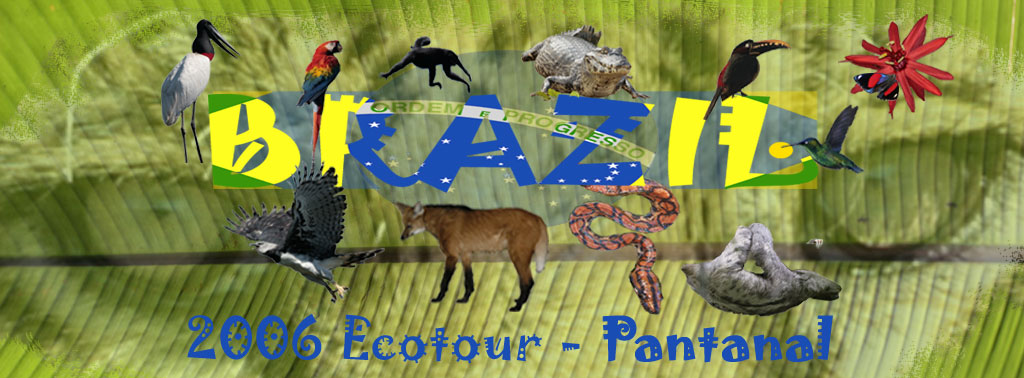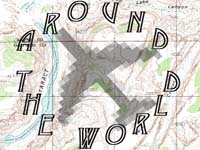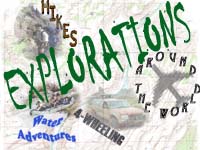
Pantanal Intro

Pantanal Intro
Added 3 September 2006
The word Pantanal comes from the Portuguese word "pantano," which means "swamp." Draining the Upper Paraguay River watershed, the Pantanal extends from western Brazil into Bolivia and Paraguay, though most of the Pantanal is in Brazil. It is the largest wetland in the world, covering 140,000-210,00 square kilometers (54,000-81,000 square miles) depending on the source, which is half the size of the state of Arizona (114,000 square miles), and larger than 29 of the states in the United States. For you international folks, England is 130,000 square miles (the entire UK is 245,000 square miles), Germany is 138,000 square miles, South Africa is 471,000 square miles. The vastness of the Pantanal is truly awe-inspiring.
The existance of the Pantanal is thanks to topography, or rather lack thereof. The north-south slope of the region (the river flows from north to south) is only about 1-2 cm per kilometer (one inch per mile)! With such a shallow slope, it takes a while for water to drain from the mountains to the sea. Of course, it doesn't hurt that the area gets about 40-55 inches of rain per year.
The Pantanal has only been relatively heavily poplulated in recent history. Most of the Pantanal is still devoid of permanent human inhabitants or only lightly populated, but many people live in the Pantanal. The city of Cuiaba, for example, has grown from a population of 50,000 people as late as 1960 to a population of over 250,000 in 1980. then on to over 500,000 today (over 800,000 in the surrounding area). The entire state of Mato Grosso contains over 2 million inhabitants.
The chief source of income within the Pantanal is agriculture (primarily rice, and soy beans), cattle ranching, some mining, and as of late, tourism.
Until recently, the Pantanal has received little attention from the outside world, but it's value is rapidly becoming known throughout the world as a true ecological treasure. This, it is hoped, will bring a much needed source of non-extractive money for the region. For all of those sources of economy listed before tourism have the power to irrevocably alter the landscape of the Pantanal. A single project proposed in the 1980s to improve the Paraguay River as a navigable channel would have destroyed absolutely massive tracts of the Pantanal by channelizing flow which would allow water to drain out of the wetland much faster than normal, dessicating the system and destroying the life-blood of the ecosystem. The beauty will last only as long as we can protect it.
This is why we went to the Pantanal; to see it and by that happy task, provide some measure of protection for it.
 |
 |